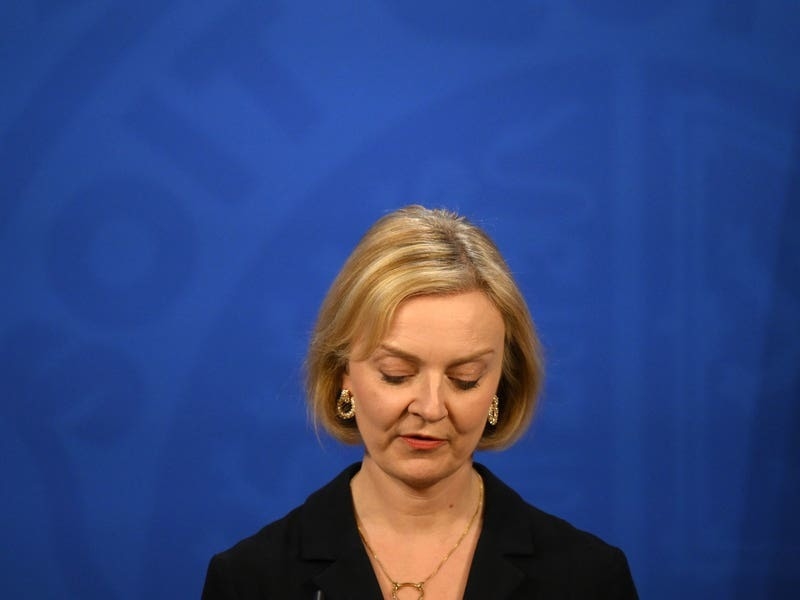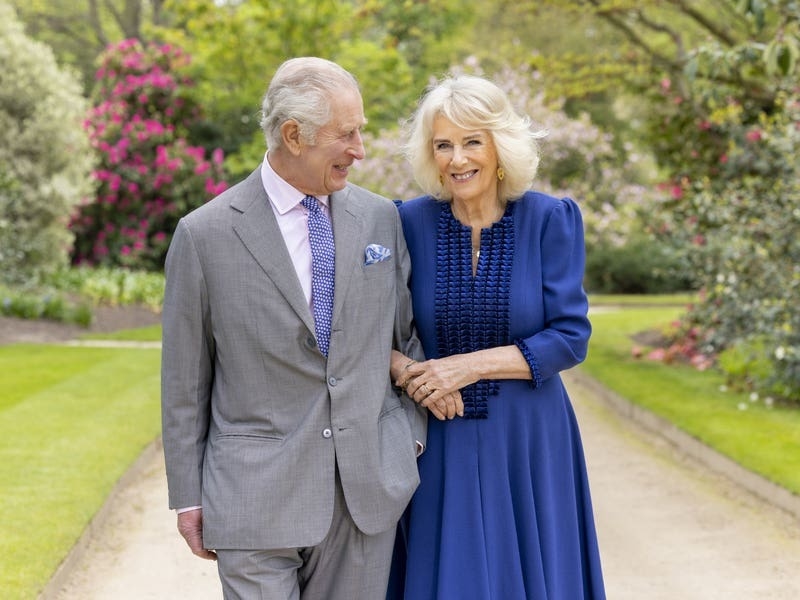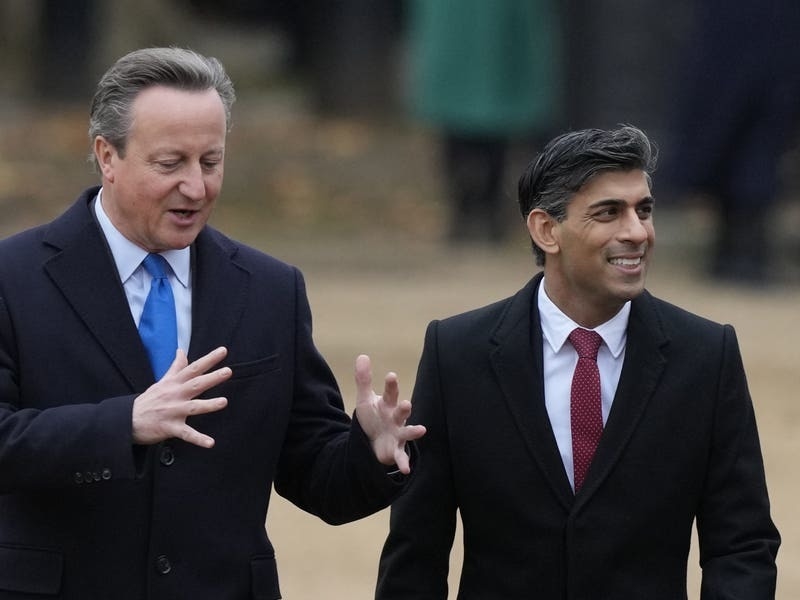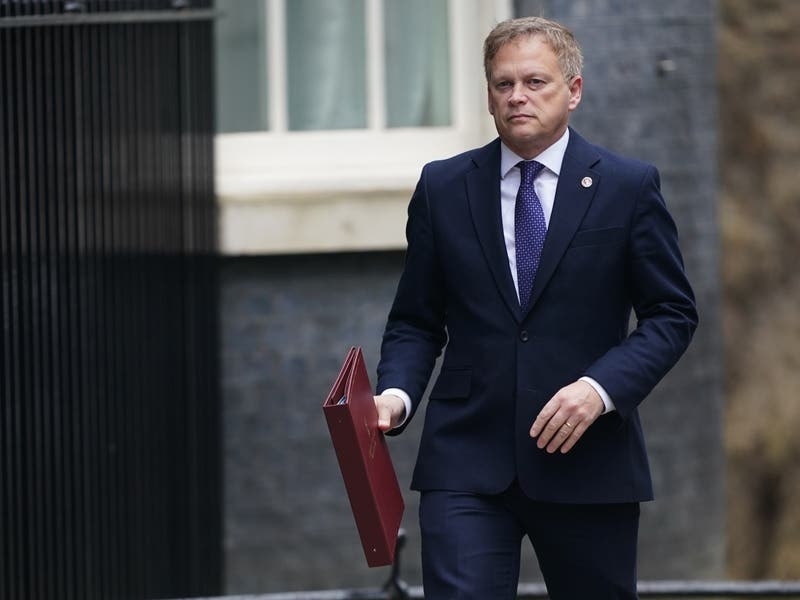More U-turns have seen Liz Truss’s economic blueprint torn up as new Chancellor Jeremy Hunt announced emergency measures intended to reassure the financial markets.
But will Ms Truss be able to survive now Trussonomics has effectively been consigned to the scrapheap?
The British people rightly want stability, which is why we are addressing the serious challenges we face in worsening economic conditions.
We have taken action to chart a new course for growth that supports and delivers for people across the United Kingdom. https://t.co/P3yglx6efZ
— Liz Truss (@trussliz) October 17, 2022
– What has been announced so far?
The plan to scrap the 45p top rate of income tax was the first of the measures announced in Kwasi Kwarteng’s mini-budget on September 23 to bite the dust, the humiliating about-face overshadowing Ms Truss’s first Tory conference as party leader. The measure would have cost just over £2 billion a year in 2026-27.
On Friday last week the Prime Minister reversed a decision to scrap a planned rise in corporation tax, reinstating the measure which will see it increase from 19% to 25%, a tax increase set to raise almost £19 billion in 2026-27.
In his emergency statement on Monday, Mr Hunt confirmed he is ditching “almost all the tax measures” in the mini-budget, including the planned cut to the basic rate of income tax from 20% to 19% in April next year.
Keeping the income tax rate at 20p in the pound is worth around £6 billion a year.
“But at a time when markets are rightly demanding commitments to sustainable public finances, it is not right to borrow to fund this tax cut.”
Mr Hunt said he is dropping the planned changes to IR35 rules for freelance workers, generating around £2 billion a year, and retaining a 1.25 percentage points increase to dividends tax which Ms Truss wanted to cut, worth £1 billion.
The Chancellor also scrapped the plans for new VAT-free shopping for international tourists, adding an extra £2 billion a year to Treasury coffers.
He abandoned plans to freeze alcohol duty rates from next February, saving around £600 million a year.
Mr Hunt said the tax cut reversals will raise some £32 billion a year, still leaving a significant hole to plug after the overall package of unfunded tax cuts announced in Mr Kwarteng’s ill-fated statement amounted to almost £45 billion.
By announcing the reversals now, Mr Hunt will be hoping that markets reduce the interest rate on government debt so that the Office of Budget Responsibility (OBR) scales back estimates of the fiscal hole to be filled before his medium-term fiscal plan on October 31, according to Torsten Bell, chief executive of the Resolution Foundation think tank.
Why has @Jeremy_Hunt pressed the nuclear button on dumping not just most of mini-Budget but also next year’s help for energy bills? Because he’s desperate to get markets to cut the interest rate on government debt ASAP so @OBR_UK scale back estimates of fiscal hole to be filled? https://t.co/7l08YHo0Y4
— Torsten Bell (@TorstenBell) October 17, 2022
– What about the energy price guarantee?
Mr Hunt also dramatically scaled back support for household energy bills.
The Chancellor said the energy price guarantee – which had been due to cap prices for two years – will end in April, after which time the Government will look to target help for those most in need.
“The objective is to design a new approach that will cost the taxpayer significantly less than planned whilst ensuring enough support for those in need,” he said.
– What is being kept?
Mr Hunt said he will continue with the decision to reverse the increase in national insurance contributions and a reduction in stamp duty.
Scrapping Rishi Sunak’s 1.25 percentage point increase in national insurance contributions represents a tax cut of more than £18 billion in 2026-27.
It was a totemic pledge in Ms Truss’s leadership campaign and legislation to repeal the increase has almost completed its passage through Parliament, factors which would have made it difficult for Mr Hunt to change course.
Reversing the cuts to stamp duty announced by Mr Kwarteng could have resulted in an extra £1.66 billion in 2026-27.
The last time Ms Truss appeared in the Commons, at Prime Minister’s Questions on October 12, she said she was “absolutely” not planning spending cuts.
“All departments will need to redouble their efforts to find savings and some areas of spending will need to be cut,” he said.
“Growth requires confidence and stability and the United Kingdom will always pay its way. This Government will therefore take whatever tough decisions are necessary to do so.”
– What’s the scale of the problem?
One of the reasons the financial markets were so spooked by the Government’s initial plans was because the gamble to boost growth relied on adding billions more borrowing to a national credit card already maxed out by the emergency responses to Covid-19 and the energy crisis.
The Institute for Fiscal Studies had estimated that tax rises or spending cuts amounting to £62 billion would be needed in 2026–27 to stabilise debt as a share of national income – a sign that the Government is getting the public finances under control.
– Can Ms Truss survive?
For a Tory leader elected on promises to cut taxes in order to boost growth, the abandonment of Trussonomics means her position is now in severe jeopardy.
She has effectively handed control of economic policy to Mr Hunt and her political credibility has been shredded.
But the lack of Tory appetite for a fresh leadership contest, and the difficulties in finding a unifying figure to replace her without a vote, may mean she limps on despite any real support – for now, at least.






